
In 1727, Russians erected a fortress at the crossroad of the Russian Empire and the Qing Empire. The fortress grew into a city that merged with a nearby trading settlement named Kyakhta. With time, Kyakhta turned into the center of trade between the two Empires and helped introduce Chinese tea to people living in the European part of Russia.
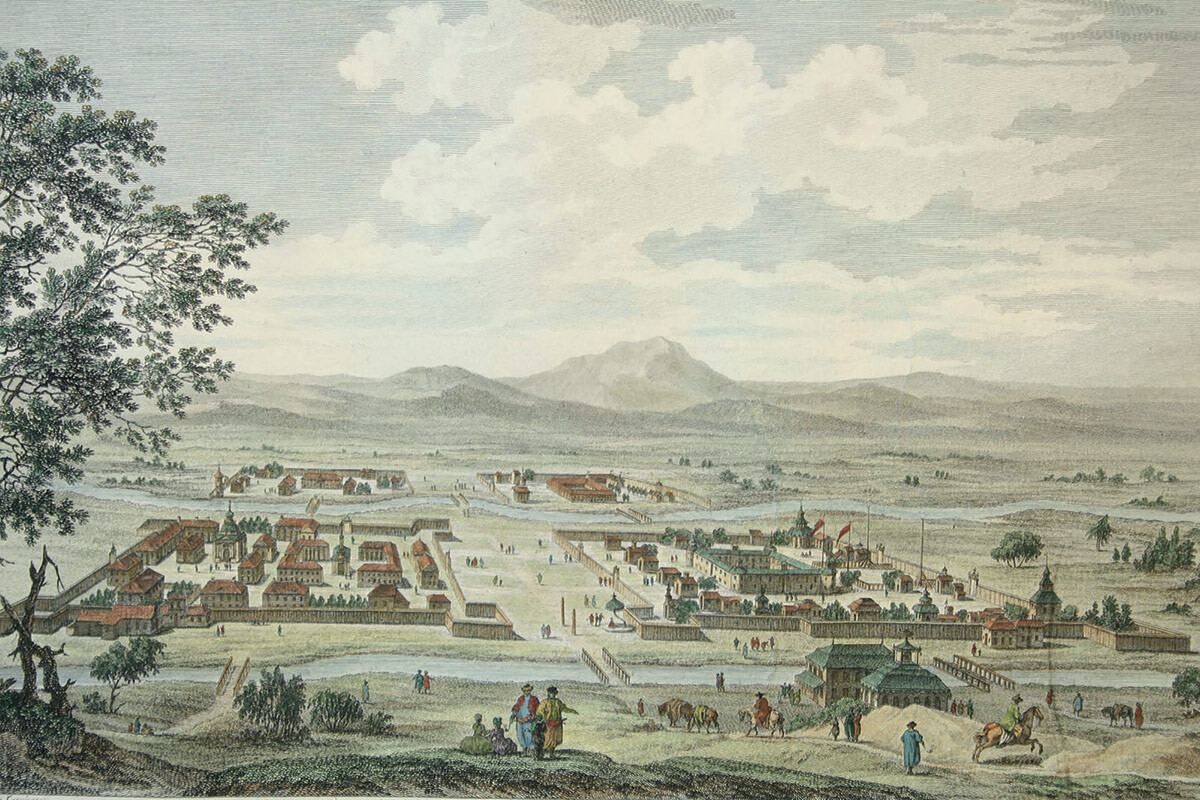
Kyakhta in the 1780s.
Nicolas Louis de LespinasseA century before this, Russia had shown interest in establishing trade relations with China. First Russian envoys went to China in 1618 and, later, the country sent samples of Russian-made goods to Beijing. Despite repeated attempts to spark trade between the two countries, it wouldn’t take off until the two sides first clashed in a military confrontation.
Starting in 1652, skirmishes started occurring between the Russian explorers, adventurers and the military and the forces of the Qing dynasty of China. At the core of the conflict was the control of areas in Siberia along the Amur River, where valuable fur was in abundance. Both sides had their vision for the region and did not shy away from using the local population to get food supplies or, in the case of the Qing dynasty, raise taxes.

Siberian Cossacks explore new lands. Art. N. N. Karazin.
Public domainThe intermittent hostilities culminated when the Qing troops besieged the Cossack fort of Albazin in 1686. This was a brutal siege that took many lives on both sides. Unable to capture a technologically advanced fortress, a Qing general decided to starve the defending Russian forces by blocking access to the nearby river.
As a result, many Russian combatants died from diseases like scurvy, typhus and cholera. But, the Qing soldiers starved and froze outside of the fortress’ walls to a point where some of them engaged in cannibalism. Some 600 Russian men and more than 1,500 Qing soldiers died as a result of the siege.

The Siege of Albazin (1686) - - - Engraving depicting the siege of Albazin from the book "Northern and Eastern Tartary" by N. Witsen. Amsterdam, 1692.
Public domainTo stop further unnecessary suffering, Russia sent envoys to Beijing, who arrived there in October 1686, offering peace. As a result, the Qing emperor ordered the siege to stop. The 24 remaining Russian defenders of the fortress were offered food and medicine by the Qing troops.
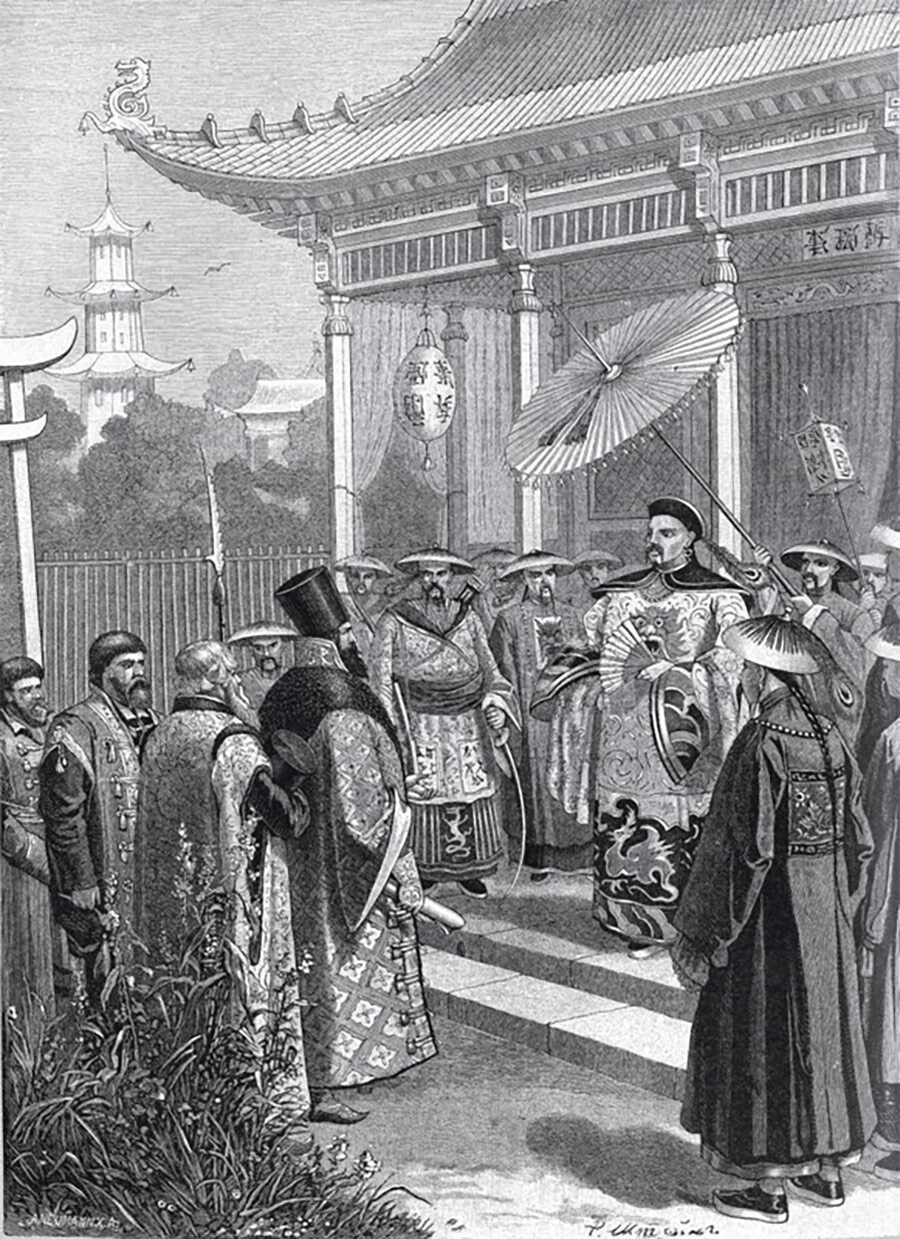
Russian Ambassadors in China, the 17th century (Niva magazine).
Public domainThe result of this battle was a treaty between Russia and the Qing dynasty, known as the ‘Treaty of Nerchinsk’. Russians conceded Albazin to Qing, but retained the nearby city of Nerchinsk. Regardless of contradicting interpretations of the treaty by historians, it is generally regarded as the beginning of established trade relations between the two countries.
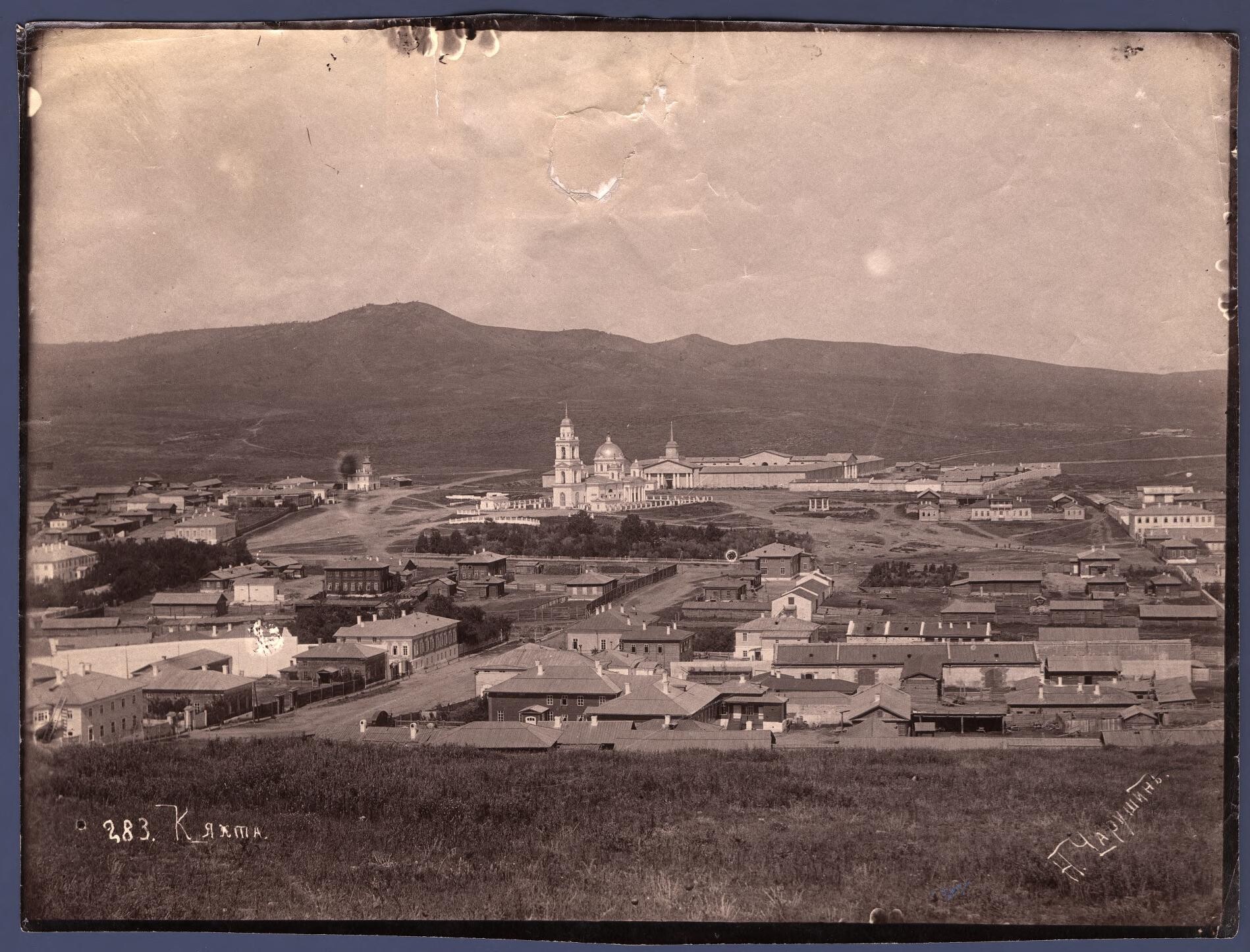
The view of Kyakhta.
Library of CongressThe Russians and the Chinese started trading in the city of Nerchinsk, but, gradually, Kyakhta replaced Nerchensk as the largest commercial city on the Russia-China border at the time. Intensifying trade between the two states resulted in formation of a northern Tea Horse Road, a trade route stretched from Wakhan to St. Petersburg, passing by such cities as Kyakhta, Krasnoyarks, Nizhny Novgorod and Moscow along the way.

Workers pack tea at a tea factory in China.
Library of CongressThe key trading commodity exported from China to Russia was tea. In exchange, the Chinese received clothes, furs, leather and other goods from Russia.
For nearly a century, Kyakhta supplied other cities in Russia with tea from China. By the turn of the 20th century, Russia had become a major importer of Chinese tea, receiving over 60 percent of all Chinese tea exported.
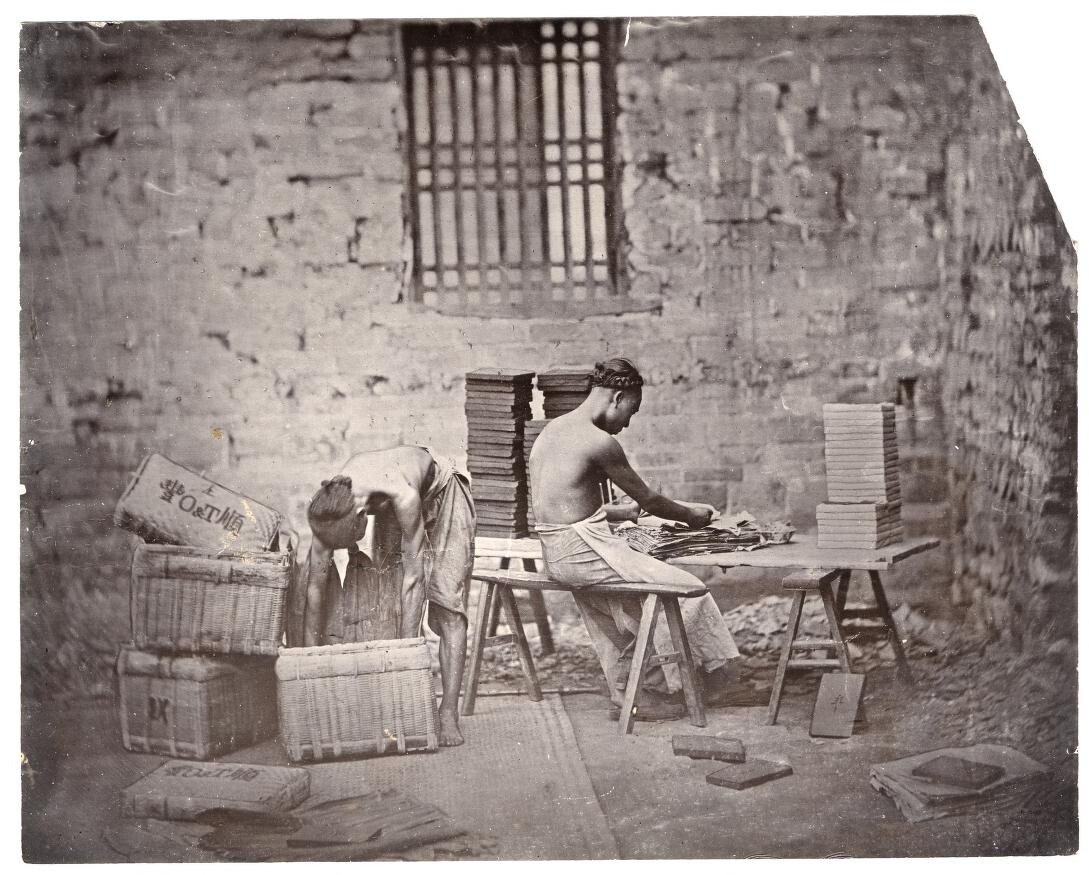
Packing of black tea bricks in a factory in China.
Library of CongressWhen the Russians launched the Trans-Siberian railway in 1891, Vladivostok outpaced London in volumes of tea trade – making the latter practically irrelevant for Chinese export – because now it became much cheaper and faster to deliver tea from the Chinese city of Hankou to Vladivostok and then to the European parts of Russia.
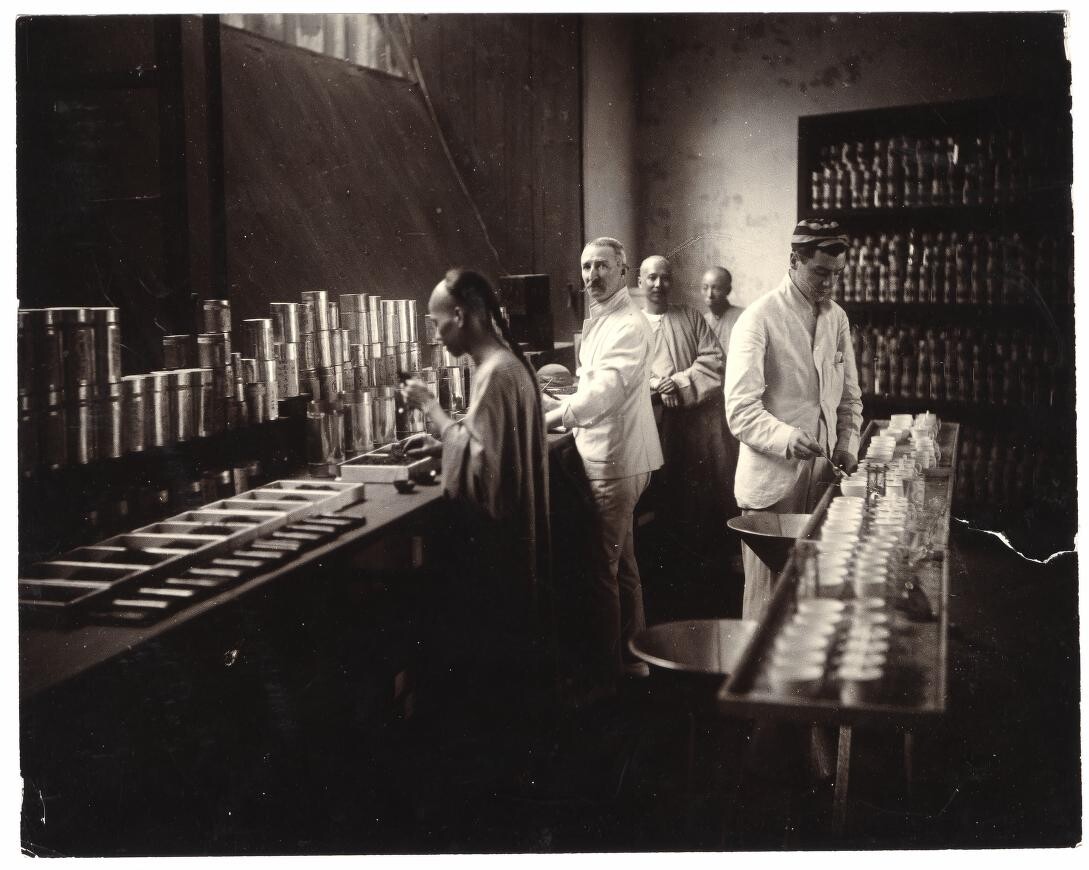
Tea tasting at a Russian factory in China.
Library of CongressThe Bolshevik Revolution of 1917 in Russia ended the era of active trade between the two countries. Before the revolution, Russians owned six tea factories in Hankou and all of them closed down when the new Soviet government denied Russian merchants trade privileges in the area they had enjoyed during the Tsarist regime.

A queue at the delivery of tea in a Russian factory in China.
Library of CongressThe effect of closure of the Russian tea factories was so pervasive that the Hankou economy spiraled into a depression.
Dear readers,
Our website and social media accounts are under threat of being restricted or banned, due to the current circumstances. So, to keep up with our latest content, simply do the following:
If using any of Russia Beyond's content, partly or in full, always provide an active hyperlink to the original material.
Subscribe
to our newsletter!
Get the week's best stories straight to your inbox